Sophia Linden

Collection
Collection is a series of five large oil paintings depicting detailed studies of the surface of rocks and fossils found on the shores of Lake Michigan. The inspiration for this work comes from a life spent engrossed in nature and an enthusiasm for detail. As a realist painter, I began to explore abstraction with this series, removing external context and zooming in on the subject so much that it became an ambiguous pattern. The surface of stone tells a story as old as time, as remnants of organisms preserved in mineral deposits that wash up on a beach allow us a window into the distant past. The process of creating these large scale images as paintings mimics the scrutinous hunt for rocks as it takes patience and a careful, vigilant surveillance in order to notice and capture tiny details. Through this series, I want the viewer to be able to find life in these objects, to give them time for consideration, to see them as valuable. By taking the time to study the small things with abundant curiosity, we learn there is so much to discover about the world we live in.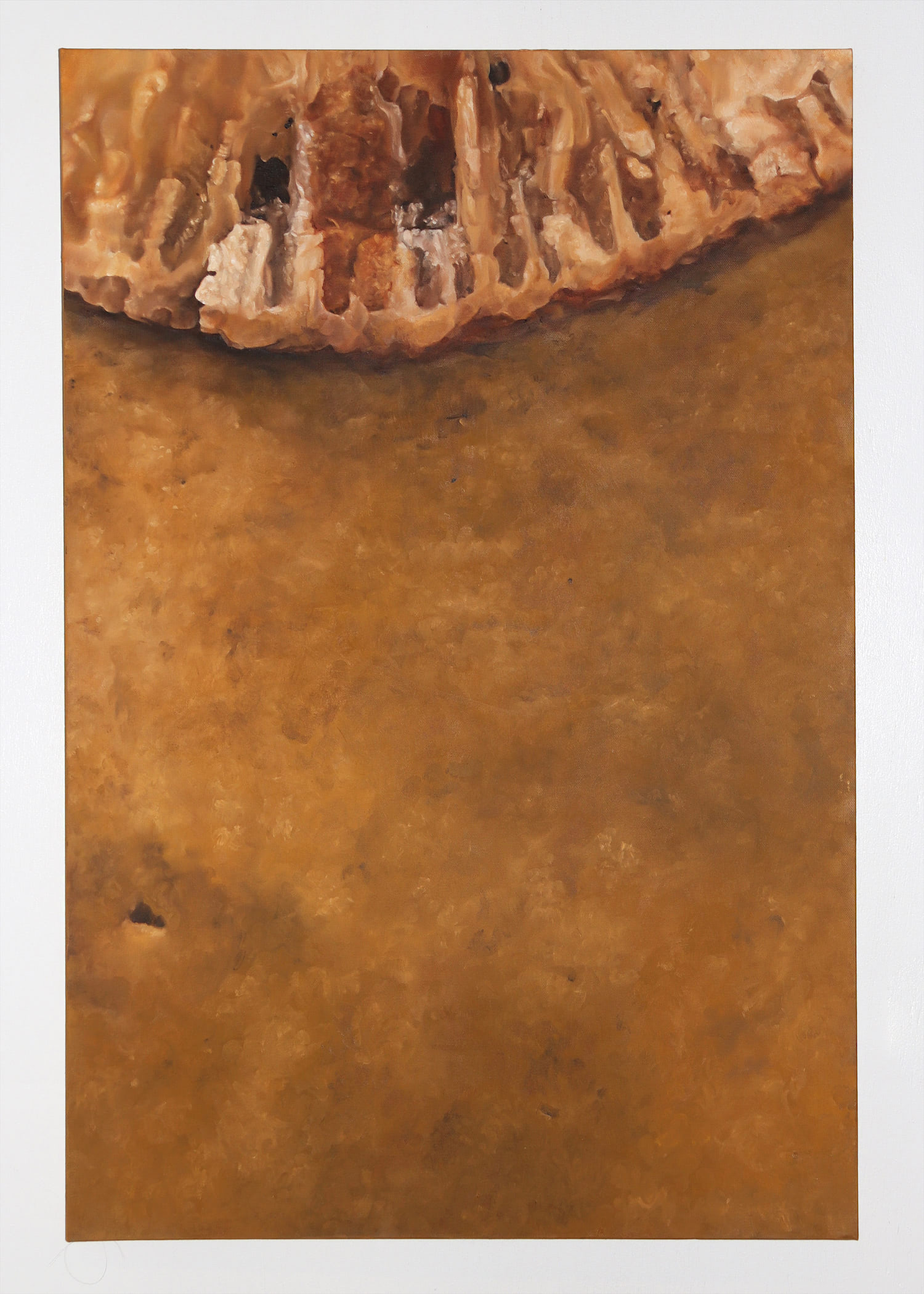
Horn Coral, 2021, Oil on Canvas, 24” x 36”
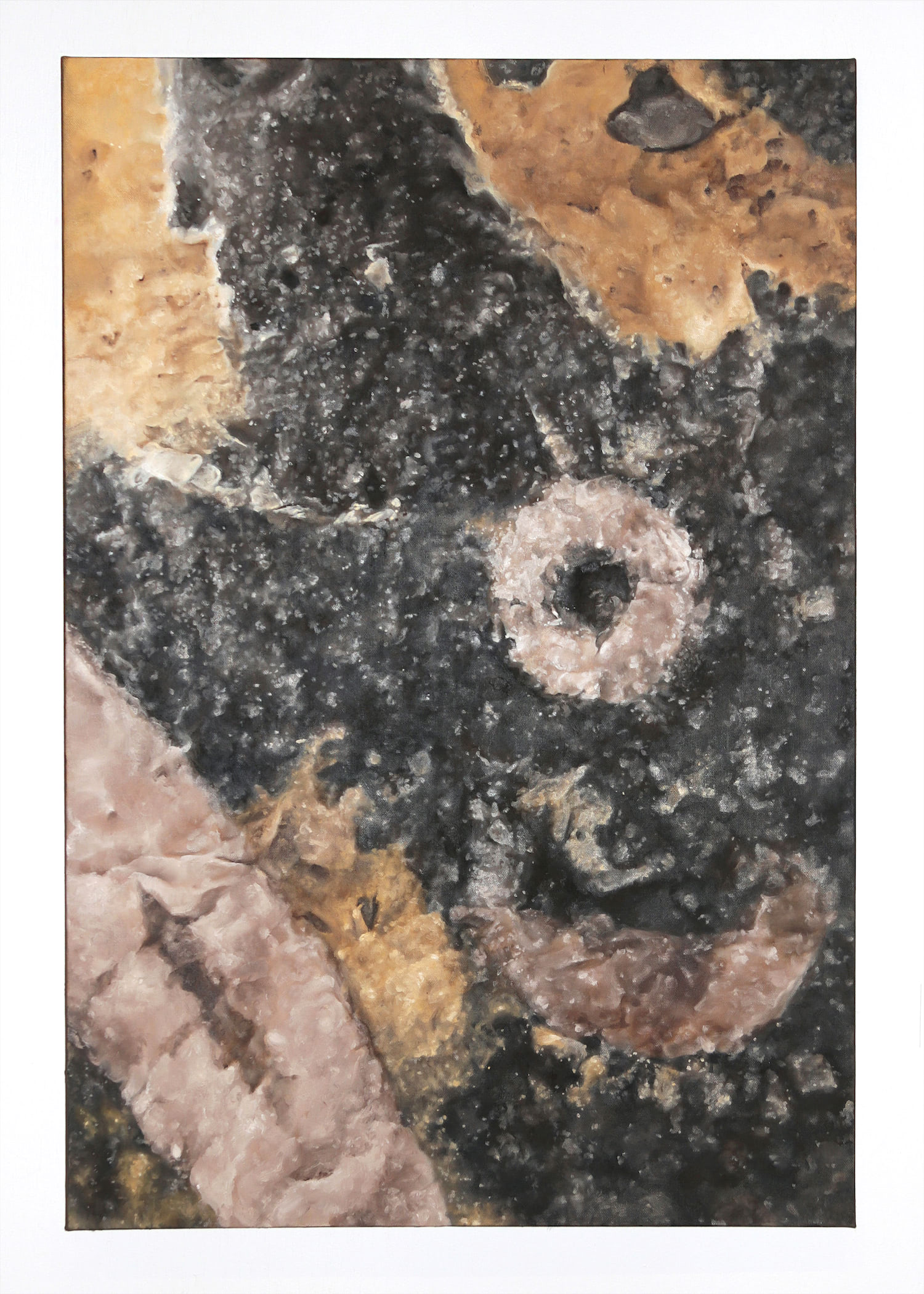
Crinoid, 2021, Oil on Canvas, 24” x 36”
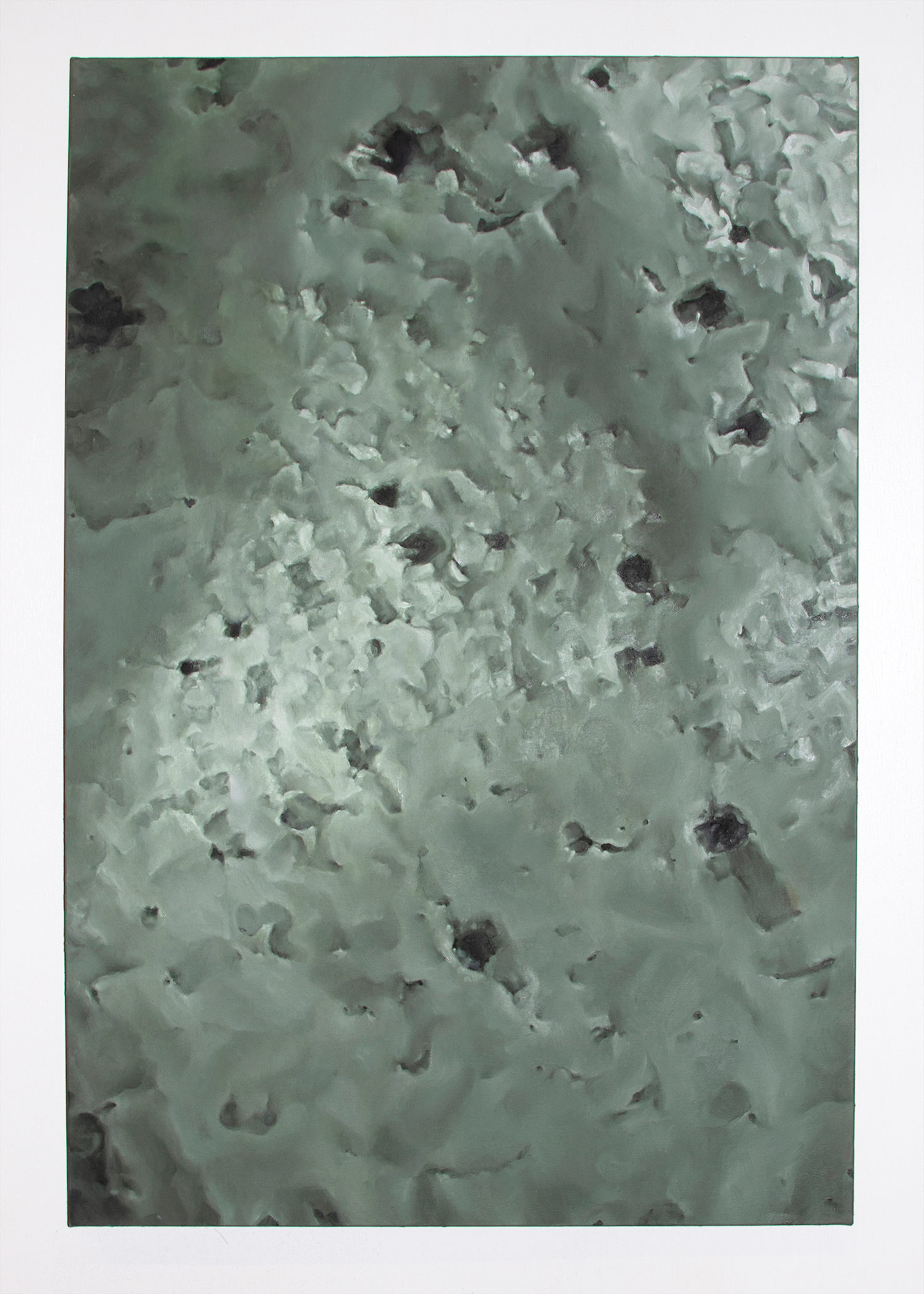
Leland Blue, 2021, Oil on Canvas, 24” x 36”
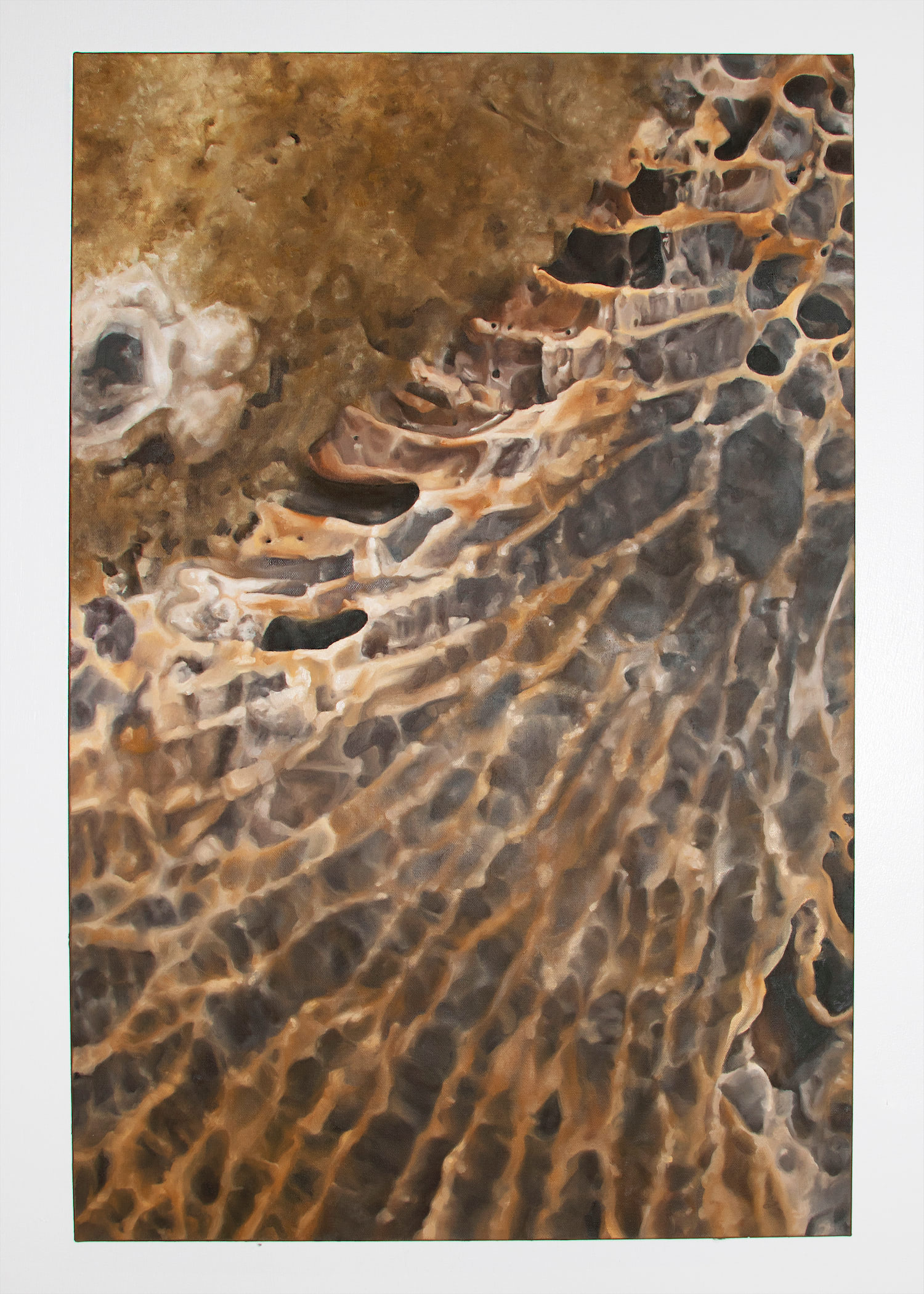
Favosite, 2021, Oil on Canvas 24” x 36”
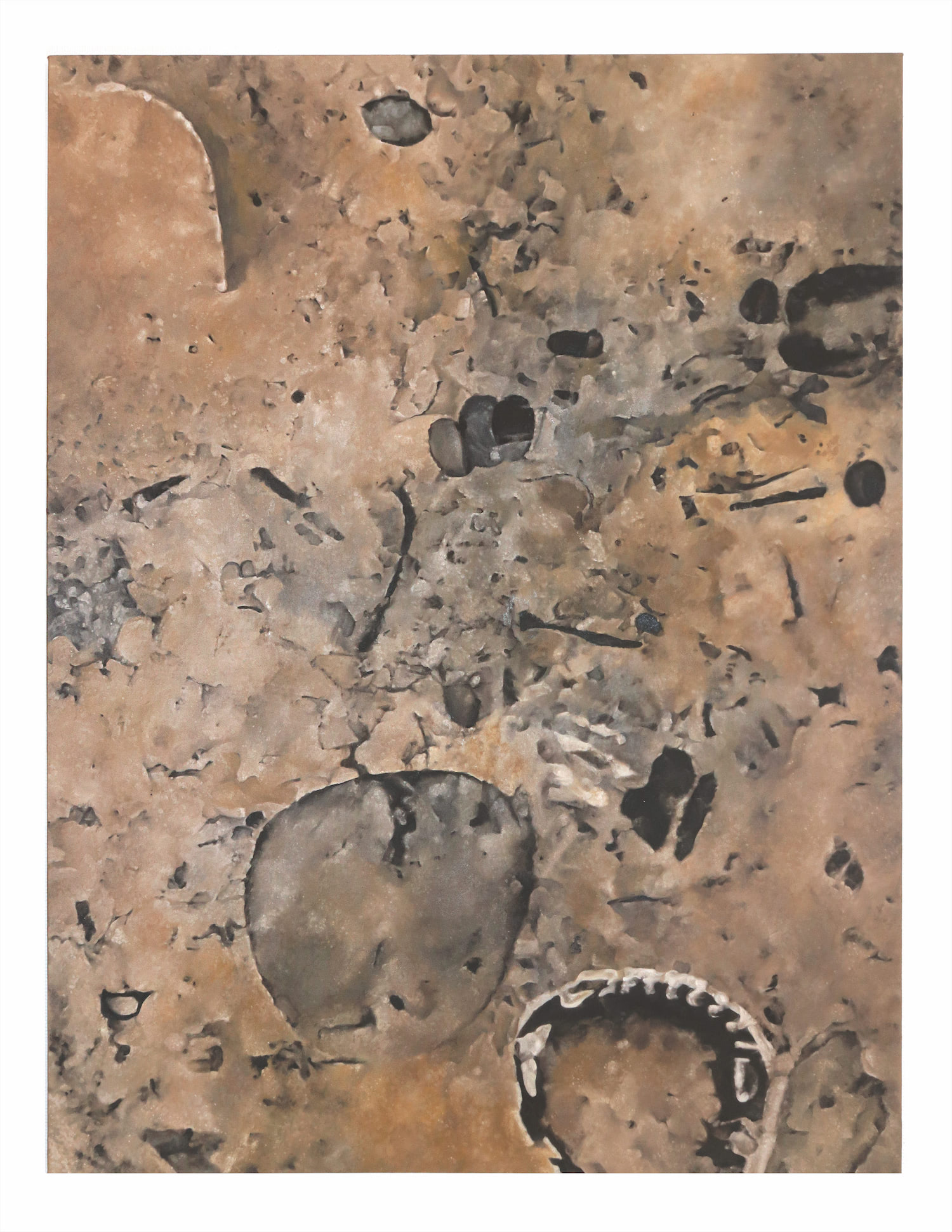
Sedimentary Stone with Bone Fragments, 2021, Oil on Canvas, 55” x72”

Exhibition space featuring the four medium sized paintings next to the artist statement and podium rock display.

Exhibition space featuring the large painting near the artist statement and podium rock display.
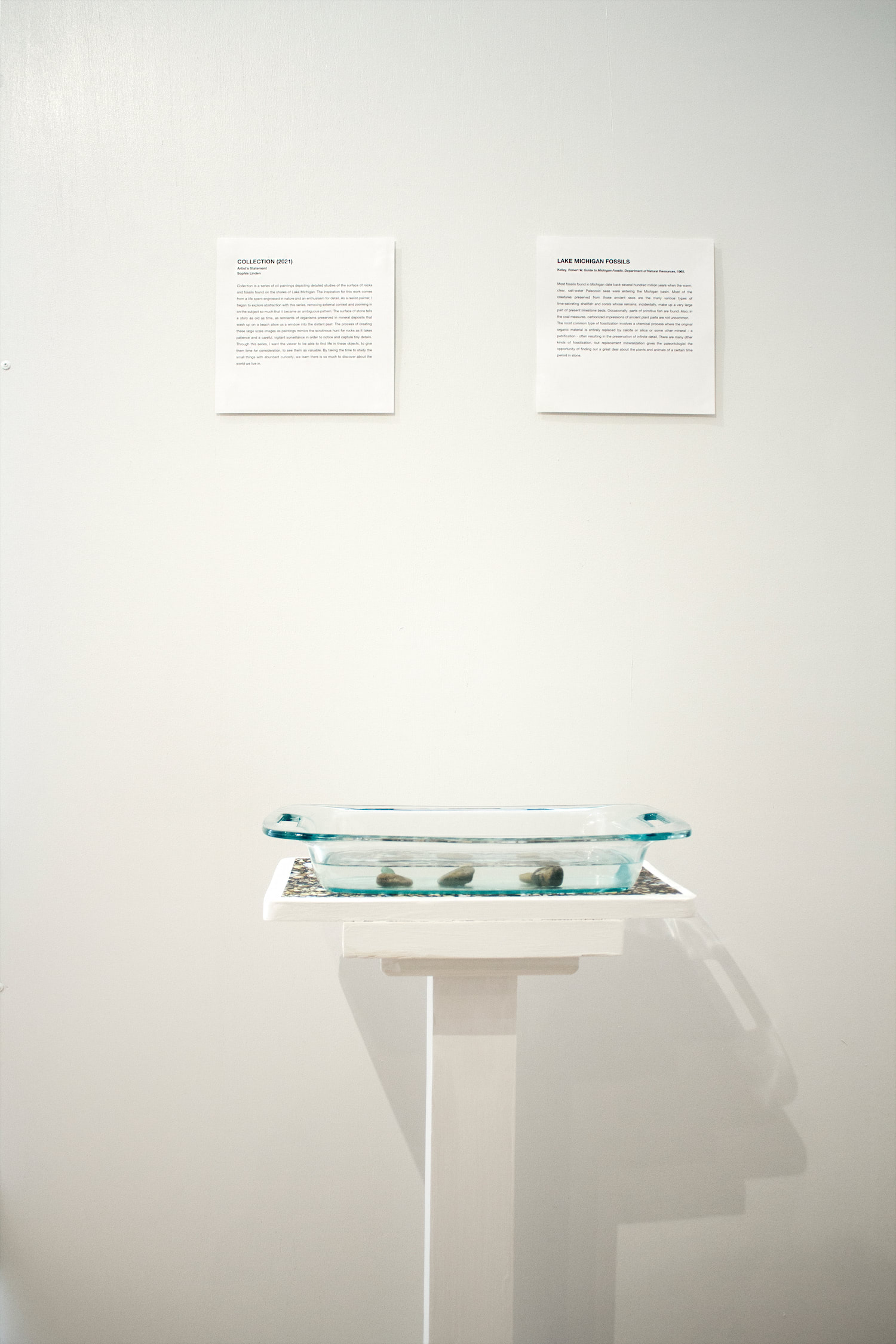
LAKE MICHIGAN FOSSILS
Kelley, Robert W. Guide to Michigan Fossils. Department of Natural Resources, 1962.
“Most fossils found in Michigan date back several hundred million years when the warm, clear, salt-water Paleozoic seas were entering the Michigan basin. Most of the creatures preserved from those ancient seas are the many various types of lime-secreting shellfish and corals whose remains, incidentally, make up a very large part of present limestone beds. Occasionally, parts of primitive fish are found. Also, in the coal measures, carbonized impressions of ancient plant parts are not uncommon. The most common type of fossilization involves a chemical process where the original organic material is entirely replaced by calcite or silica or some other mineral – a petrification – often resulting in the preservation of infinite detail. There are many other kinds of fossilization, but replacement mineralization gives the paleontologist the opportunity of finding out a great deal about the plants and animals of a certain time period in stone.”
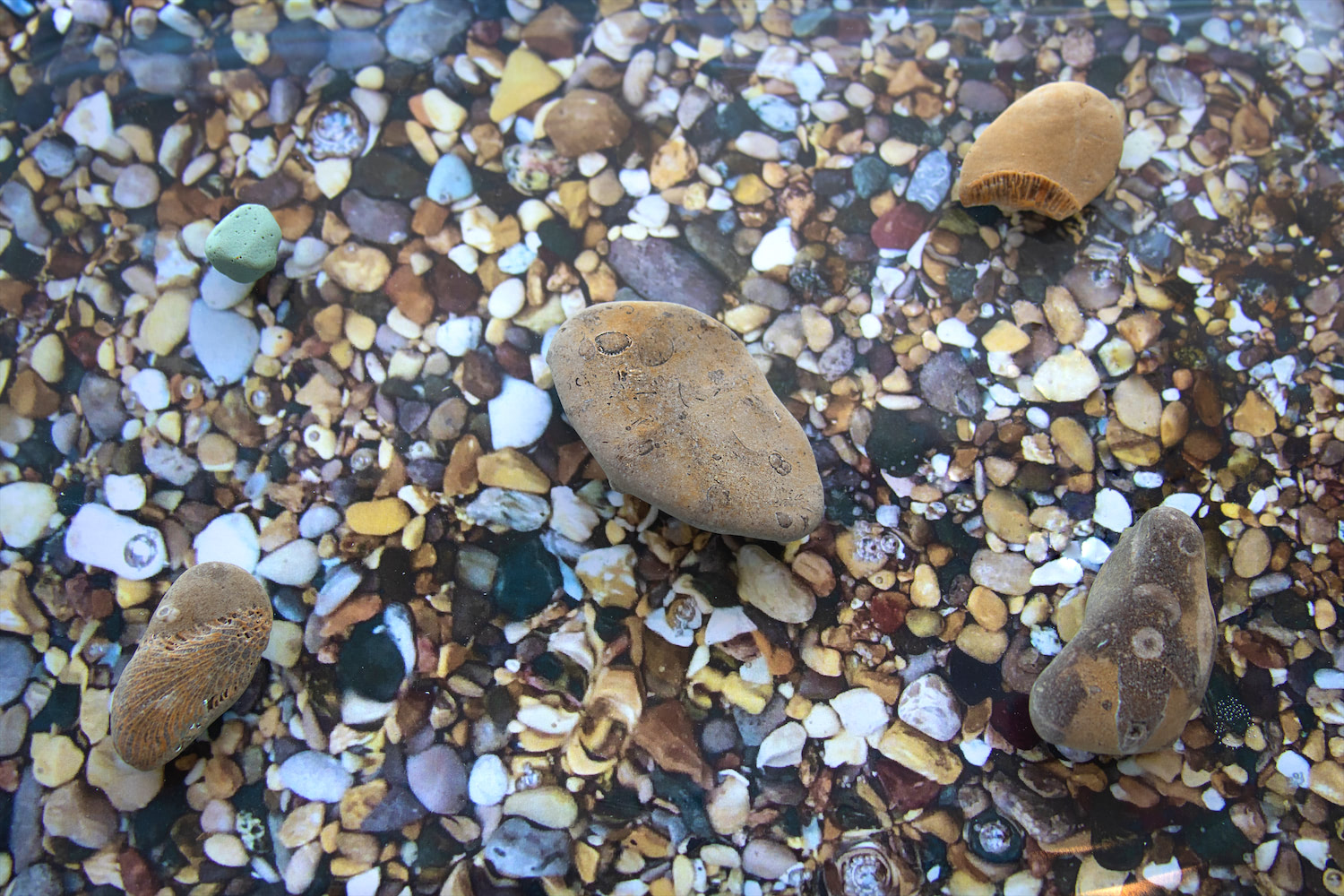
Rock Display, Five Rocks Submerged in Water in a Glass Tray
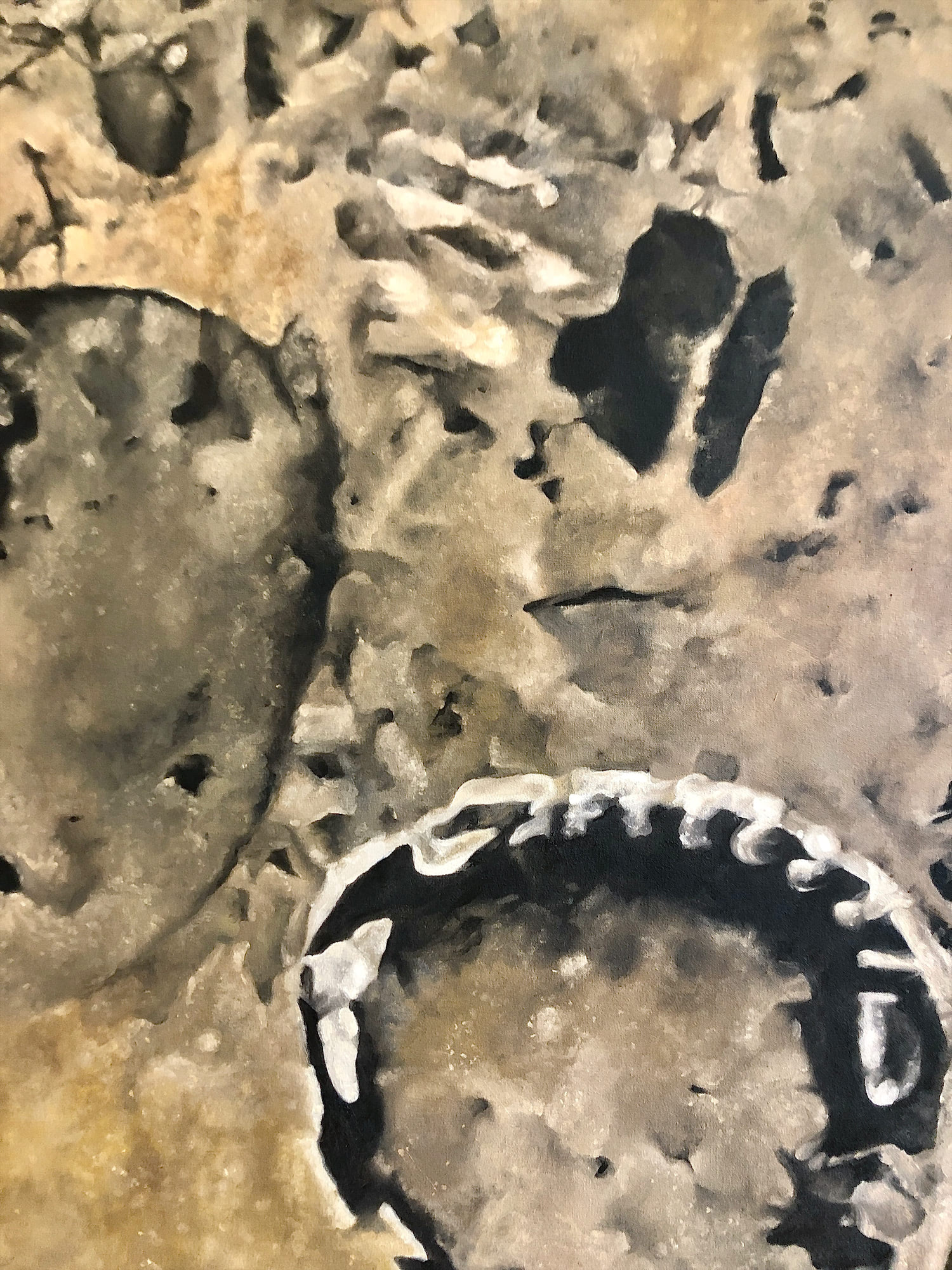
Close-up detail shots
